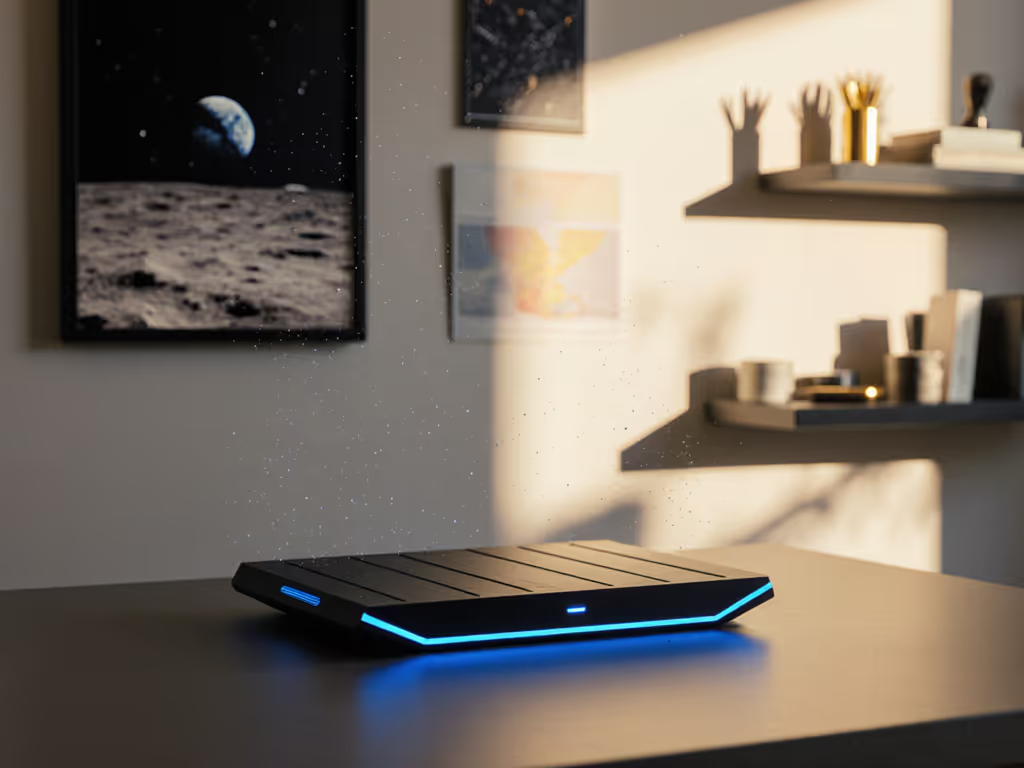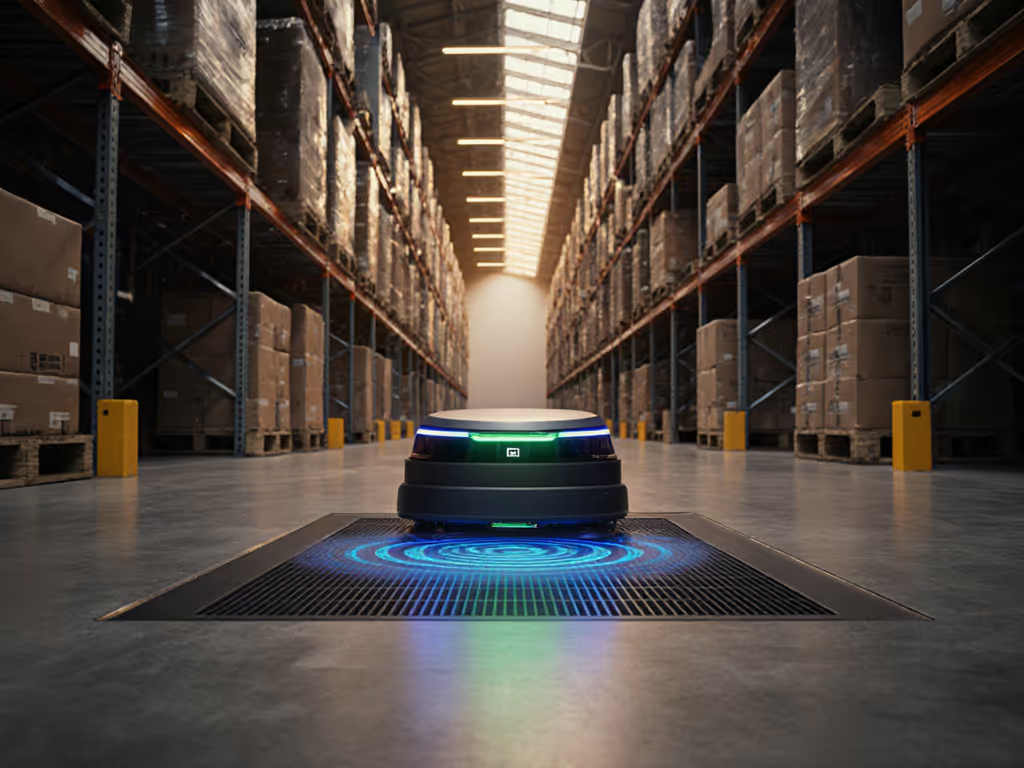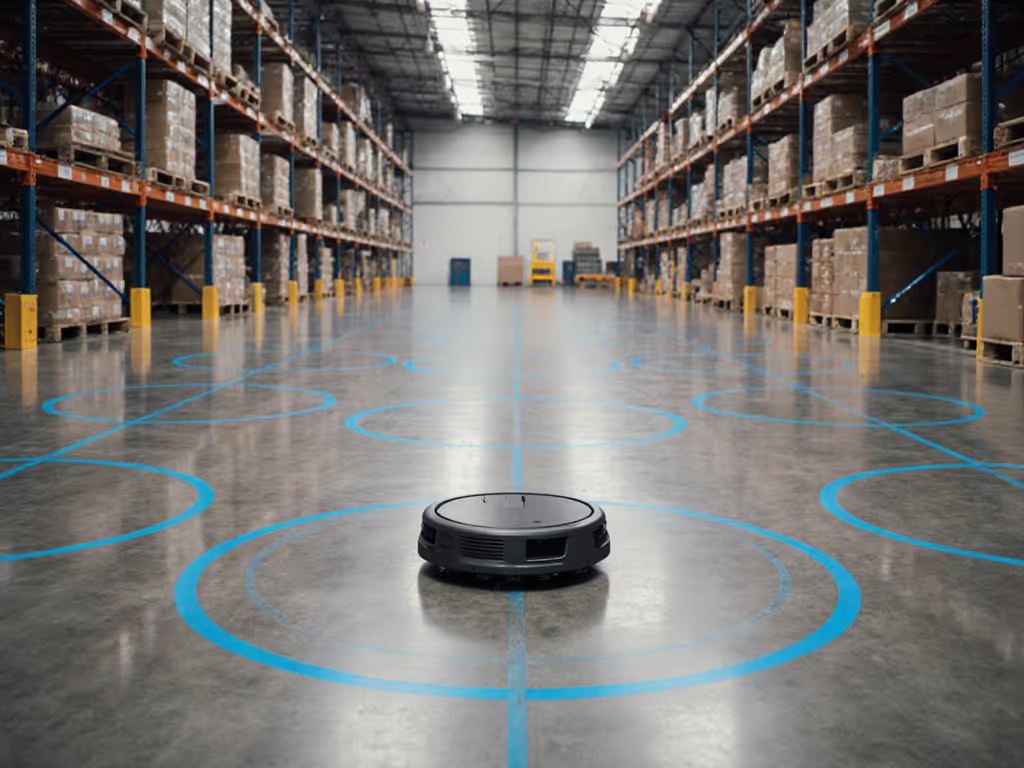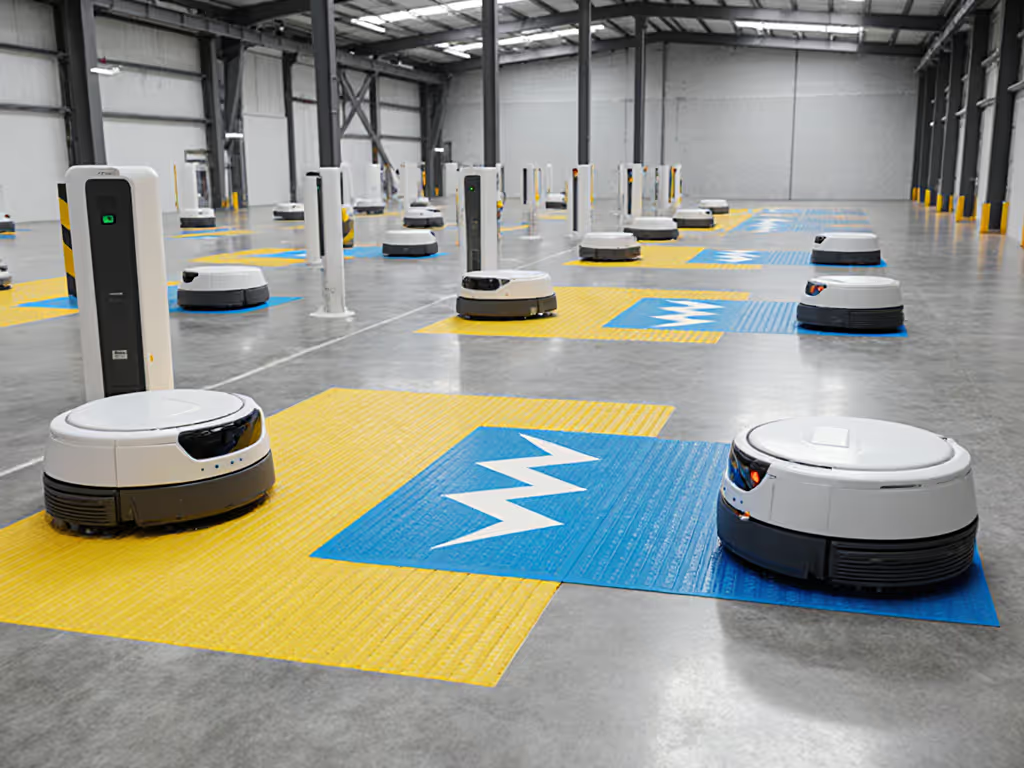
Liberate Warehouse Robots: Wireless AMR Charging Guide

For facility managers wrestling with charging bottlenecks, wireless charger systems are no longer futuristic, they're the operational backbone of modern warehouse robotics charging. I've seen teams lose 20% of productive uptime to manual battery swaps and misaligned docks. But when you place power where robots naturally pause (near staging zones or inventory check stations), opportunity charging turns dead time into fueled readiness. Industry reports confirm this shift: facilities using strategic wireless charging see up to 30% productivity gains by eliminating human intervention. See how minimizing plug-in time translates to dollars in our wireless fleet charging ROI analysis. Let's build systems where power flows as smoothly as your workflows.
Calm spaces emerge when power has predictable, obvious homes.
Why Clarity Trumps Raw Specs in Real Warehouses
My hospitality background taught me a critical lesson: anxiety kills efficiency. Early in my career, I watched seasoned warehouse staff fumble with charging docks, afraid of "breaking" the system. It mirrors my experience designing guest rooms for my elderly parents, they'd avoid charging stations entirely, terrified of misalignment. That's when I realized: no matter how advanced your autonomous mobile robot charging solution is, its value evaporates if humans (or robots) hesitate to engage.
Wireless charging solves this through predictability. Unlike conductive systems requiring millimeter-perfect alignment, modern magnetic resonance tech tolerates 5-10cm offsets. Robots glide to charging zones during natural workflow pauses (awaiting picking assignments or returning from deliveries), without disrupting operations. Label beats lecture here: a simple "Charge Zone" stencil on the floor eliminates 90% of deployment friction. When your AMRs know where to refuel, they'll do it seamlessly between tasks.

Your 4-Step Wireless Charging Implementation Blueprint
Building an intuitive system requires room-by-room thinking (even in warehouses). Forget chasing peak wattage; focus on placement rhythm. Here's how I structure it:
1. Map Natural Robot Pause Points
Identify where robots idle for >90 seconds: inventory check stations, loader bay queues, or cross-dock zones. These become charging micro-zones. Place stations within these areas (not at room edges), so robots refuel during existing workflows. Example:
- Picking aisles: Install pads at 30m intervals under shelving (robots pause while awaiting next assignment)
- Dock doors: Embed floor stations where robots queue for loading
- Maintenance alcoves: Position wall-mounted units for deeper charges during inspections
2. Calculate Power Budgets per Zone
Don't over-engineer. Most AMR power solutions need only 30-60 minutes of partial charging per shift. Work backward from your robot's battery capacity: For the physics behind transfer efficiency and where energy is lost as heat, read our inductive charging efficiency explainer.
| Robot Type | Battery Size | Charge Needed per Shift | Station Wattage | Required Dwell Time |
|---|---|---|---|---|
| Picking AMR | 500Wh | 150Wh (30%) | 500W | 18 mins |
| Tugger AGV | 1,200Wh | 240Wh (20%) | 1,000W | 14 mins |
Note: Frequent partial charges actually extend lithium battery life (no more "overnight full cycles" needed).
3. Standardize Physical Cues
Your team shouldn't need manuals to understand charging zones. Implement:
- Color-coded floor markings: Yellow for opportunity charging (≤30 mins), blue for deep-cycle zones
- Universal symbol labels: ⚡ icon + dwell time (e.g., "⚡ 15min") visible from robot path
- Non-slip pad textures: Ensure stable robot positioning during charging

4. Future-Proof Your Layout
Today's industrial IoT charging must accommodate tomorrow's tech. Reserve space for:
- Qi2 alignment upgrades (critical for 2025+ robot models)
- Data ports beneath stations (for future firmware updates during charging)
- Expandable circuits (add 20% spare capacity)
Turning Downtime into Intelligence
The magic happens when charging stations pull double duty. Modern factory automation wireless systems transmit sensor data during refueling, monitoring battery health, navigation accuracy, or payload stress. While robots recharge at staging zones, your control system:
- Pushes updated maps for next-shift layouts
- Analyzes component wear patterns
- Syncs task logs to central analytics dashboards
This transforms idle minutes into intelligence goldmines. One client reduced maintenance costs 18% simply by correlating charging-session data with motor performance trends.
The Liberator's Mindset
Wireless charging isn't about eliminating cords, it is about eliminating uncertainty. I've watched teams transform when they stop worrying about "Is the robot plugged in right?" and start optimizing what the robot does with its time. That's the liberating shift: power becomes an invisible utility, like breathing, not a manual chore.
When your AMRs autonomously glide to designated zones (no alarms, no human intervention, just predictable readiness), you've achieved what every facility leader craves: continuous workflow with zero friction. The robots aren't just charged; they're confident in their environment. And so are your people.
Ready to reimagine your charging ecosystem? Start by walking your facility with a stopwatch. Where do robots pause longest? That's your first charging zone. Because the best power isn't the fastest, it is the most obvious. Our lab wireless charging speed tests show why sustained, cooler watts beat peak claims in real operations.




